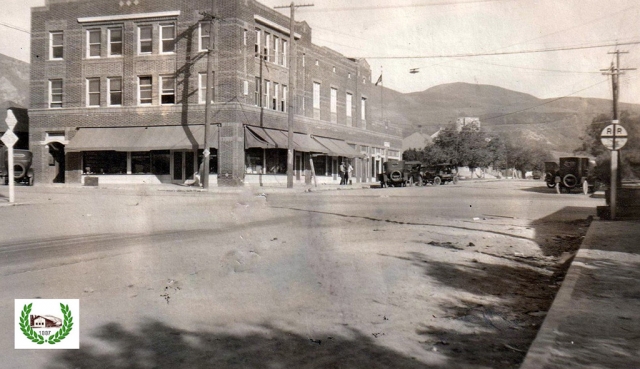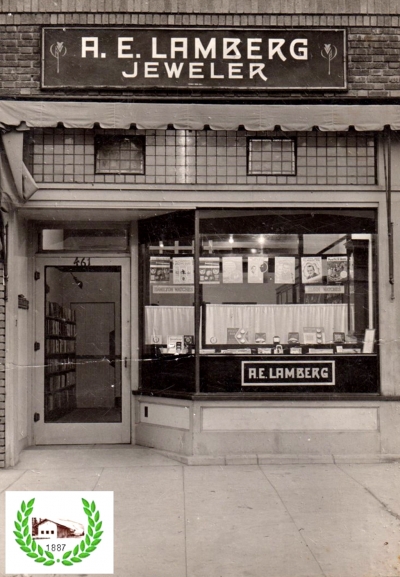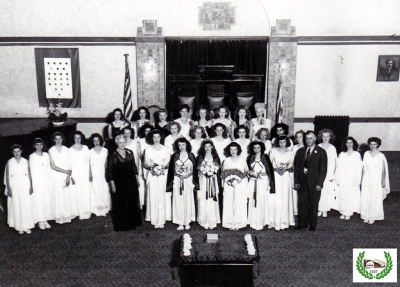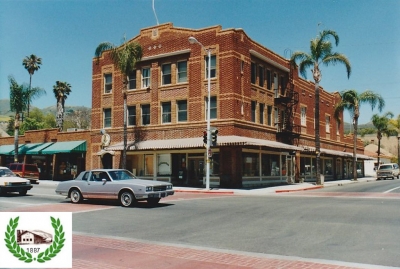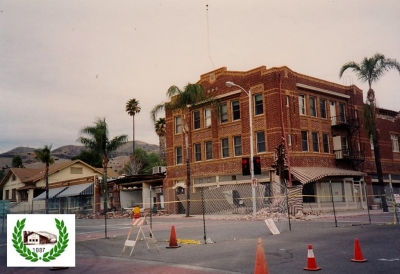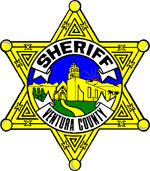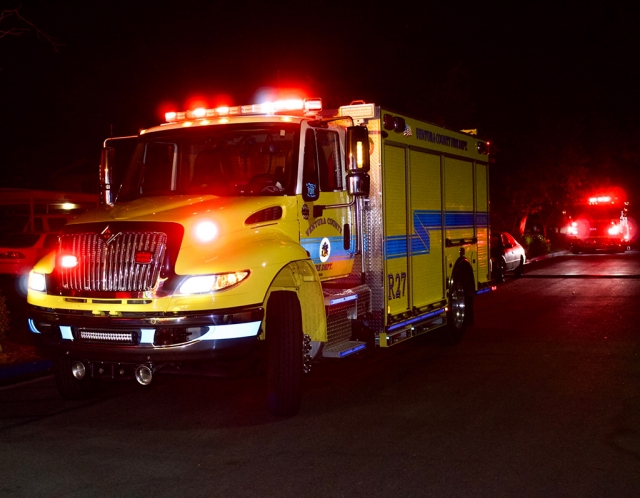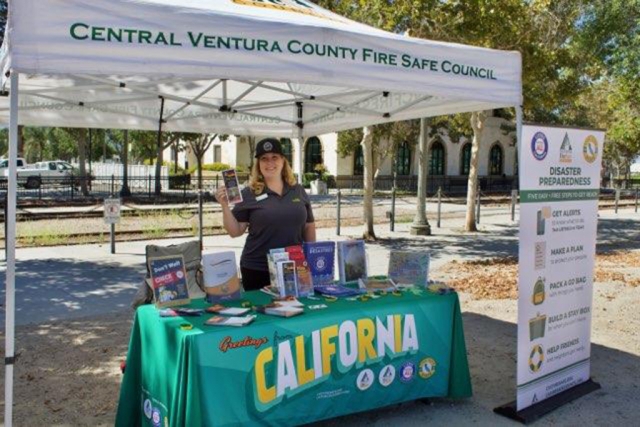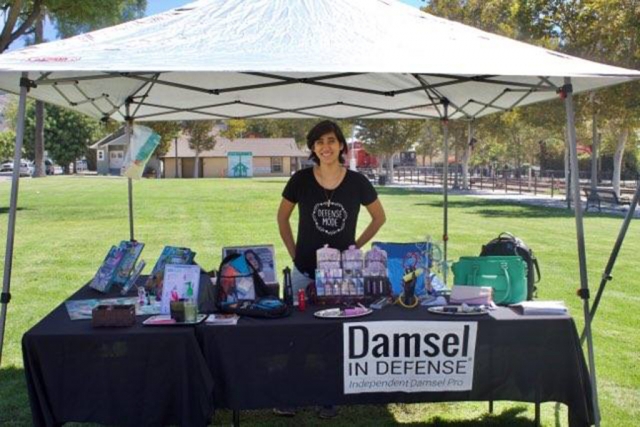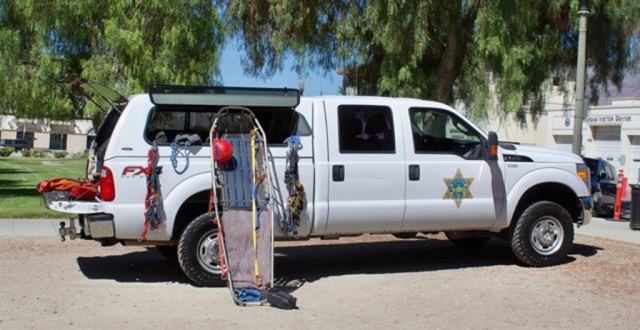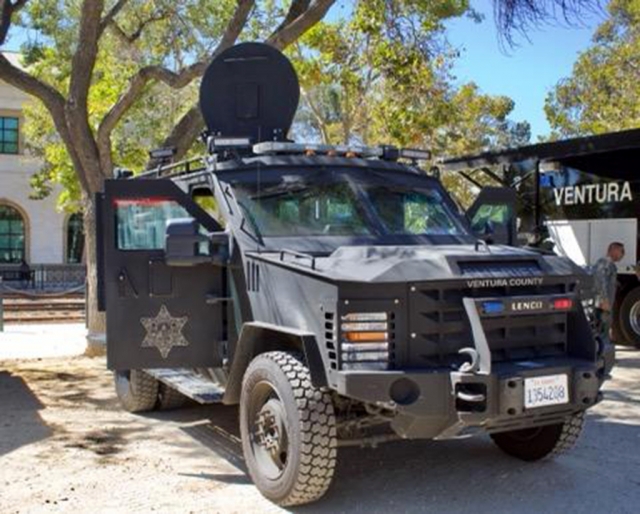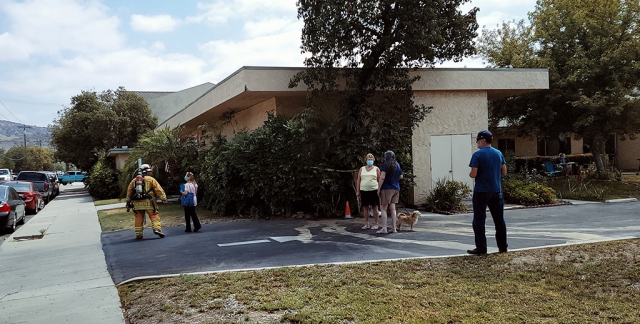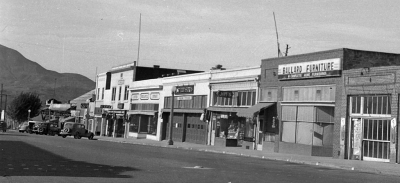|
By Gazette Staff Writers — Wednesday, September 15th, 2021
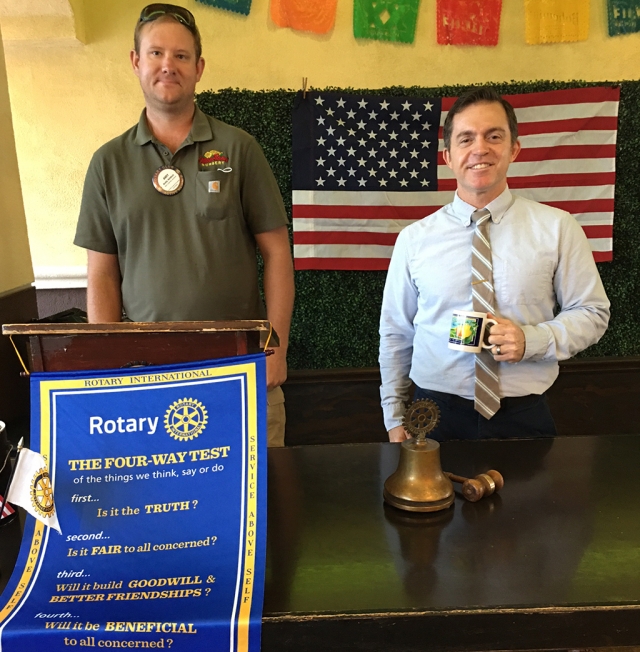 (l-r) Rotary Club of Fillmore’s President Andy Klittich with guest speaker Clay Downing. Downing works for the County of Ventura as the County Executive Officer in the Sustainability Division. This division works on developing and implementing durable sustainable energy initiatives that support sensible growth, healthy environment, economy and enhanced quality of life, and greater self-reliance for the region. Photo Courtesy Rotary Club member Martha Richardson. Enlarge Photo |
|
By Gazette Staff Writers — Wednesday, September 15th, 2021
Courtesy Fillmore Historical Museum The Fillmore State Bank was incorporated in 1905 and soon thereafter moved into its own building (which is still standing) on the southeast corner of Central and Santa Clara Avenue. It is a two-story building, and the bank occupied the ground floor. The second floor was leased to the Fillmore Masonic Temple. Within a decade both groups outgrew their quarters and built two significant buildings in Fillmore. The Fillmore State Bank built a new bank building which still stands on the northeast corner of Main and Central, which is currently vacant. The Masons built a three-story structure on the northeast corner of Central and Sespe. This is the focus of this article, unfortunately it is a landmark that was lost in the 1994 Earthquake. Some background on Masonry is necessary. The term refers to fraternal organizations which trace their origins to local stonemason guilds from the late 1400’s in the British Isles. Many of the United States’ founding fathers belonged to the Masons including Washington, Jefferson and Franklin. The Fillmore Lodge was begun in 1906 as a spin off from the Santa Paula Lodge, it continued until the destruction of their building forced them to merge again with Santa Paula. The building itself was owned by the Fillmore Masonic Temple Association who rented to the various businesses and organizations which occupied it including the Fillmore Masonic Lodge 379. The Lodge was on the second and third floors of the building. Affiliated organizations such as Eastern Star and Jobs Daughters also used the facility. On the third floor was a large room and kitchen which was used by many local groups including Rotary. The ground floor was occupied by various businesses and offices. The “anchor” business was a grocery store on the corner facing Central Avenue. The first store we have a record of was Reinemen’s General Merchandise. This was replaced by the Red and White Store owned first by F. H. Adamson in 1922, and later by Glen Fansler, Sr. from 1942 to 1962. Regular customers ran monthly tabs and the store would deliver to the home. Like other grocery stores in Fillmore, the store had no meat counter. If a customer ordered meat, the store owner would go down to Coleman’s Meat Market and pick it up for the customer and included it in the order. The one story section on the north side of the main building housed at various times the local library, Hutchins’ Cleaners and the Christian Science Reading Room among other concerns. In 1972, the newly formed Fillmore Historical Museum moved into the ground floor of the Masonic Building. There it remained until the Southern Pacific Depot was purchased by Edith Moore Jarrett. After it was moved and renovated, it became the new home of the Museum at 444 Main Street next to the former fire station. When Fillmore incorporated in 1914, the time seemed right for a larger, more convenient post office. When the modern elegant Masonic Temple was built in 1919, space was provided at 455 Sespe Avenue, the post office opened for business there on Monday morning, January 5, 1920 and remained there until it was moved to its current location on Central Avenue. The area vacated by the Post Office became the location of the Municipal Court in the late 1950s and for a brief time the local library (having moved from the Central Avenue side of the building) and various other businesses. Also on the Sespe Street side of the building was A.E. Lamberg Jewelry Store. In addition to running the jewelry store, Mrs. Lamberg ran a lending library during the 1930s and Mr. Lamberg gave music lessons and conducted a community band. This all ended on the morning of January 17, 1994 when the Northridge Earthquake struck. The unreinforced masonry could not withstand the quake and the walls partially collapsed. The building was demolished but the many memories of it remain. |
|
By Gazette Staff Writers — Wednesday, September 8th, 2021
The Firefighters of your Fillmore City Fire Department would like to invite you to attend a memorial celebration marking the 20th anniversary of the terrorist attacks on September 11th, 2001. As a nation, we were brought together in tragedy, captivated by the images of destruction, despair, fear, and raw emotion. The only images strong enough to help us cope with such devastation were the amazing images of unity, strangers helping strangers, heroism, and watching America’s front line of public servants run toward the face of danger. We invite you to join us this Saturday morning to remember the civilians, Firefighters, Police Officers, and Military Personnel who perished on that fateful day. Please reflect quietly as I read a few brief reminders of what our country endured on the morning of September 11th, 2001. Let us remember the sacrifices made by so many that morning. From the everyday heroes who helped save perfect strangers, to the first responders who walked toward danger in hopes of helping anyone they could, they were all a shining example of how we can easily come together in times of national crisis. We will never forget those brave individuals, and we will never forget September 11th, 2001. Gathering at the Fillmore Fire Station will start at 6:30 AM in the front. The American flag will be raised promptly at 6:55 followed by a County-wide radio broadcast of a remembrance. Fillmore Fire Station 91 is located at 711 Landeros Lane, face masks and social distancing will be required. Refreshments will be served afterwards. |
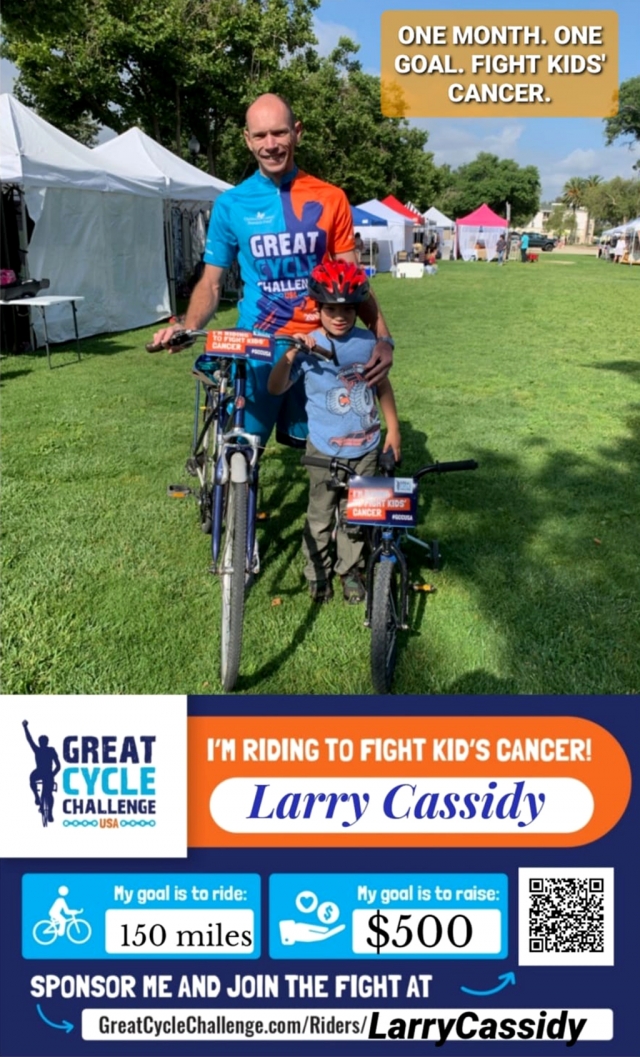 Larry Cassidy of Fillmore will ride 150 miles during the month of September in support of Children’s Cancer Research Fund. If you see Larry riding around town, give him a honk to show your support! Enlarge Photo By Gazette Staff Writers — Wednesday, September 8th, 2021
Larry Cassidy will ride 150 miles during month of September in support of Children’s Cancer Research Fund.
Larry Cassidy, a resident of Fillmore, is planning to ride 150 miles and raise $500 during the month of September for Children’s Cancer Research Fund (CCRF) in support of its 7th annual Great Cycle Challenge USA. Founded in 2015, Great Cycle Challenge USA has grown to become one of the biggest cycling events in the country. In “Over 15,000 American children are diagnosed with cancer every year and, sadly, 38 children die every week,” said “This is the third time I have participated in Great Cycle Challenge,” said Larry Cassidy. “During those years, I rode 562 miles and raised $1,169.80. This year, I am aiming to raise $500 and ride 150 miles.” Funds go to support research at leading pediatric cancer centers across America. To learn more about Larry’s Great Cycle Challenge USA and to make a donation, please visit www.greatcyclechallenge.com/Riders/LarryCassidy. To participate in Great Cycle Challenge USA, visit GreatCycleChallenge.com. About Great Cycle Challenge USA: Great Cycle Challenge USA encourages cyclists across the United States to About Children's Cancer Research Fund: Children's Cancer Research Fund invests in groundbreaking research that |
|
By Ventura County Sheriff Department — Wednesday, September 8th, 2021
On Thursday, 8/26/21, at about 11:39 AM, the Ventura County Sheriff’s Office received a 911 call from a family member of a male subject who was reportedly stranded on the Halfmoon Trail (20W07) after his dirt bike reportedly broke down. The Halfmoon Trail is predominantly a single-track dirt bike trail rated as “most difficult.” The Halfmoon Trail is in northern Ventura County in the Los Padres National Forest near Lockwood Valley. The Lockwood Valley Sheriff’s Station initiated a response to the area. The stranded rider had reportedly text messaged a family member to call 911 and relay the trail he was on. The Lockwood Valley Sheriff’s Station is outfitted with a Polaris RZR four-seat utility-task vehicle (UTV). This UTV was purchased utilizing funding from the Ventura County Off-Highway Vehicle fund. A Lockwood Valley resident deputy utilized the Sheriff’s RZR and responded to Halfmoon Trail to a point near where the rider was believed to be. The deputy hiked about 0.3 miles and located the rider’s dirt bike on the trail, but the rider was not there. The deputy followed the rider’s shoe prints for several miles which led to Sunset Campground at the intersection of the Lockwood Trail, Miller Jeep Trail, Halfmoon Trail, and Piru Creek Trail. At the campground, the deputy located a pair of dirt bike riding boots and a chest protector believed to belong to the missing rider. After searching the area, the deputy located sock imprints in the dirt which led to the Piru Creek Trail. With temperatures over 90 degrees and the fact that the missing rider was walking in his socks in a remote area, additional resources joined the search including another Sheriff Lockwood Valley resident deputy and State Park Rangers from the Hungry Valley State Vehicular Recreation Area. The Lockwood Valley deputies work closely with the Ventura County Fire Department Fire Captains who staff Fire Station 16 in Lockwood Valley. Fire Station 16 is also outfitted with a Polaris RZR four seat utility task vehicle (UTV-16). Due to the changes in the search conditions and location, UTV-16 respond to assist with the search. One of the Lockwood Valley deputies and State Park Rangers began hiking west on the Piru Creek Trail from Gold Hill Campground. The other Lockwood Valley deputy continued hiking east on the Piru Creek Trail following sock prints in the dirt. After hiking about four and a half miles, the rider was located on the Piru Creek Trail. The rider was fatigued and dehydrated but was able to hike a short distance back to Sunset Campground with the deputy. UTV-16 met them at the campground and safely transported the rider to the Lockwood Valley Sheriff’s Station. The rider’s dirt bike was successfully recovered, and some valuable lessons were learned by the involved rider. When visiting the national forest, the age old saying “Proper planning prevents poor performance” couldn’t be truer. It is imperative to recognize the trails difficulty ratings, with respect to the abilities of your vehicle and your abilities as its operator before proceeding into any off-highway vehicle areas. Many of the hazards and risks associated with OHV recreation in these remote areas can be mitigated by proper planning and preparation. At a minimum, it is imperative to be familiar with the area you are in, have a map, be able to identify where you are on that map, have sufficient food and water, and ensure someone who is not with the group knows the details of your trip and when to report you as overdue. Additional OHV safety information can be found at www.parks.ca.gov. The Lockwood Valley Sheriff’s Station credits this successful rescue to the outstanding partnerships and exceptional teamwork with the Ventura County Fire Department and California Department of Parks and Recreation Park Rangers. Nature of Incident: Off-Highway Vehicle (OHV) Remote Rescue |
|
By Gazette Staff Writers — Wednesday, September 8th, 2021
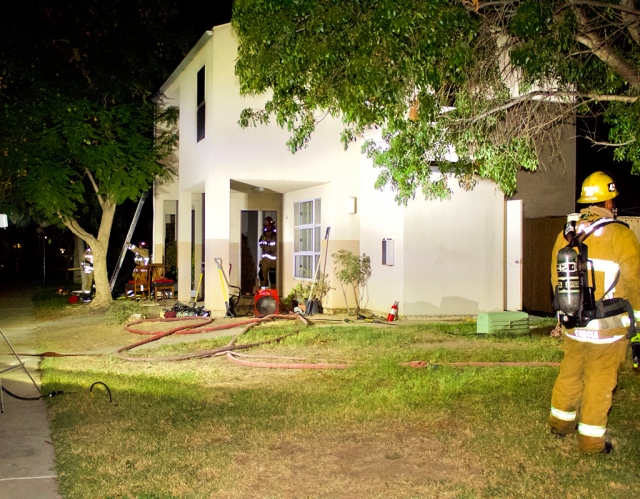 On Sunday, September 5th, 2021, at 8:07pm, the Ventura County Fire Department and Fillmore City Fire were dispatched to a reported structure fire at the Rancho Sespe apartment complex. Arriving fire crews reported a 2-story apartment complex with smoke coming from one upstairs unit. Firefighters quickly knocked down the fire 15 minutes after arriving on scene. An initial primary search was made and all occupants were accounted for. Fire crews determined the fire did not spread into the attic and was primarily confined to the one unit. Crews remained on scene for about three hours. Fire investigator was also on scene. There were no injuries. Cause of the fire is under investigation. Photo courtesy Angel Esquivel—AE News. Enlarge Photo |
|
By Gazette Staff Writers — Wednesday, September 8th, 2021
 On Tuesday, August 31st, at approximately 11:55am, a Fillmore Sheriff’s deputy advised radio traffic that a suspect had fled from the deputy in the area of Ventura and Fillmore Street. Additional units responded to assist in searching for the suspect. Units had a perimeter set up in the area of Fillmore City Hall. Suspect description was a Hispanic male with white tank-top, grey sweatshirt running through the senior apartments off Saratoga and Ventura Street, east of the alley by Circle K. VC Sheriff’s Copter was searching for over 30 minutes before being cleared. Suspect was not located. No additional information was given at the time of the incident. Photo courtesy Angel Esquivel-AE News. Enlarge Photo |
|
By Gazette Staff Writers — Wednesday, September 8th, 2021
 On Saturday September 4th, 2021, the City of Fillmore hosted an Emergency Preparedness Day in Central Park from 10a.m. to 1p.m. Emergency personal and their vehicles were on hand, and visitors could talk to real life heroes who respond to emergencies throughout Ventura County. Pictured are Fillmore Parks & Rec employees Krista Martinez and Sandra Edwards. Enlarge Photo 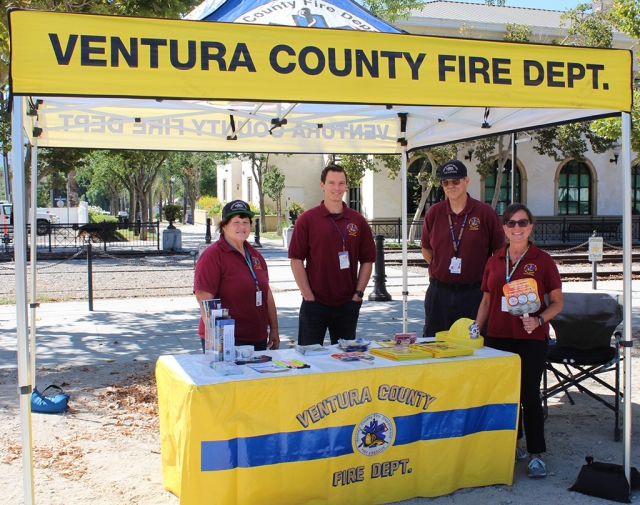 Ventura County Fire Station reps, smiling as they hand out Emergency Preparedness material. Photos courtesy Angel Esquivel—AE News. Enlarge Photo |
|
By Gazette Staff Writers — Wednesday, September 8th, 2021
 On Wednesday, September 1st, 2021, at 11:36am, Fillmore City Fire (E191) was dispatched to a reported structure fire in the area of Santa Clara St and Fillmore Street. Arriving fire crews reported a possible apartment complex fire with nothing showing. Fillmore Fire requested Sheriff’s Department and Investigator 91(IV91) to respond to the scene for investigation; no injuries were reported. No additional information was given at the time of the incident. Photo courtesy Angel Esquivel-AE News. Enlarge Photo |
|
By Gazette Staff Writers — Wednesday, September 8th, 2021
Courtesy Fillmore Historical Museum Take a walk on the bike paths around town either along the Sespe or the Santa Clara and you will encounter a number of people out for a run. The track team and cross-country team use the streets to train. Fillmore has an active running community. Here’s a little inspiration for them all. “The Packing House Bunion Derby” “On the 4th of July, 1927, myself and some other boys who had parents working at the Fillmore Lemon House, decided to participate in the race from Santa Paula to Fillmore. It was part of the holiday barbecue put on by the Lemon House. I hitched a ride with one of parents of a classmate to the starting point in Santa Paula. The other boys had second thoughts about the race and decided it was too far to run; I decided I would run anyway. The gun sounded and we were off! The race was going along just fine and after running about three miles, I found myself in the lead. Since I was ahead, I had an entourage of six or seven autos following my progress. They were supplying me with plenty of liquids. By the time I reached Rancho Sespe, I realized I would not make it to Fillmore without getting rid of some of the liquids I had consumed thus far, so I dashed into a lemon orchard and relieved myself. I returned back to the highway to find eight or ten cars waiting for me to continue the race, so off I went! I was first to cross the finish line in Fillmore. I was later told the next runner behind me was just crossing Sespe River bridge. I went to Jim Ipswitch’s pool hall to pick up my shirt and pants, left there when I changed into my running clothes. Since I was not eligible to receive the first prize money of $15.00, (my parents did not work at the packing house) Jim Ipswitch took up a collection for me-enough to provide candy, cokes, milk shakes, etc. for me for three or four months. That was the end of the Packing House Bunion Derby!” This fun remembrance was collected by Kenneth Fine for his An Anecdotal History of Fillmore, California. Kenneth was unable to find someone to publish his book before his death in 1989. With help from Don Nelson, Thomas Nelson, and Doug Fine the book passed into the hands of Marie Wren who was writing her own book on Fillmore history. Marie did some minor editing and had the book published for all to enjoy. There are a few copies for sale at the Fillmore Historical Museum. |


